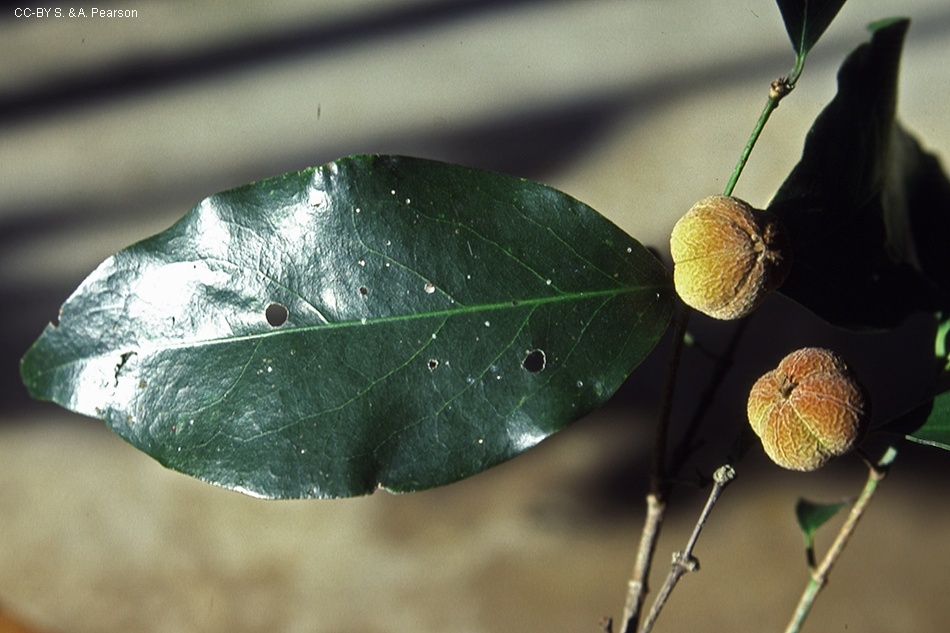Australian Tropical Rainforest Plants - Online edition
Dissiliaria baloghioides F.Muell. ex Baill



Baillon, H.E. (1867), Species Euphorbiacearum: recherches complementaires sur les Euphorbiacees Australiennes. Adansonia 7: 359 Type: "Leichhardt, n. 13, n. 14 (1843), Moreton-Bay (herb. Mus. F.Muell.!). - Fitzalan, Pine River, Port Denison (herb. F.Muell.!). Lectotype: Queensland. Moreton District: [label in Leichhardt's hand] "scrub towards the Bunyas, 18/9/1843"; [printed label] Moreton Bay; [label in Leichhardt's hand] "Wood 14..the blackfellows make their boomerangs of it"; [label in unknown hand] "n.328h. Leichhardt Moreton Bay" (lecto [here designated]: P n.v., photo at BRI)." Forster, P.I. (1997), A taxonomic revision of Dissiliaria F.Muell. ex Baill. (Euphorbiaceae). Austrobaileya 5(1): 11-14
Tree to 36 m. Bark shed in flakes or strips, brown. Branchlets lenticellate with age.
Leaves opposite or whorled. New foliage pinkish red. Petiole 4-10 mm long, often reddish. Stipules ovate, 1-4 mm long. Leaf blades elliptic to broad-elliptic, ovate or obovate, about 5-12 cm long, 1.5-7 cm wide, base cuneate obtuse or truncate, margin entire, often undulate, apex acute, acuminate or obtuse. Lateral veins well developed, 8-11 per side of midrib, interlateral reticulate tertiary veins prominent below.
Inflorescences unisexual and plants dioecious, axillary in distal axils. Flowers in clusters or fascicles. Male inflorescences on peduncles c. 1 mm long, flowers with pedicels 4-12 mm long; flowers about 6 mm in diameter. Tepals imbricate, 3 inner and 3 outer, elliptic to 1.8-4.5 mm long, 1.2-2 mm wide. Stamens 15-20. Female inflorescence clusters sessile, flower pedicels 2.5-9 mm long. Tepals imbricate, 3 inner and 3(-4) outer,elliptic to ovate, 3-4 mm long, 1.8-2.2 mm wide. Ovary s with dense golden hairs; styles 3-branched, 2.6-3.5 mm long, styles shortly connate and recurved.
Features not available.
Occurs in CEQ, from Mr Dryander near Airlie Beach and southwards to south eastern Queensland. Found in notophyll vineforests particularly on creek alluvia.
This species has been confused with Dissiliaria indistincta but is distinguished from it by the well developed interlateral venation on the lower leaf surface. This profile information and associated coding has been adapted from Forster (1997) and Harden et al. (2014).
1218





